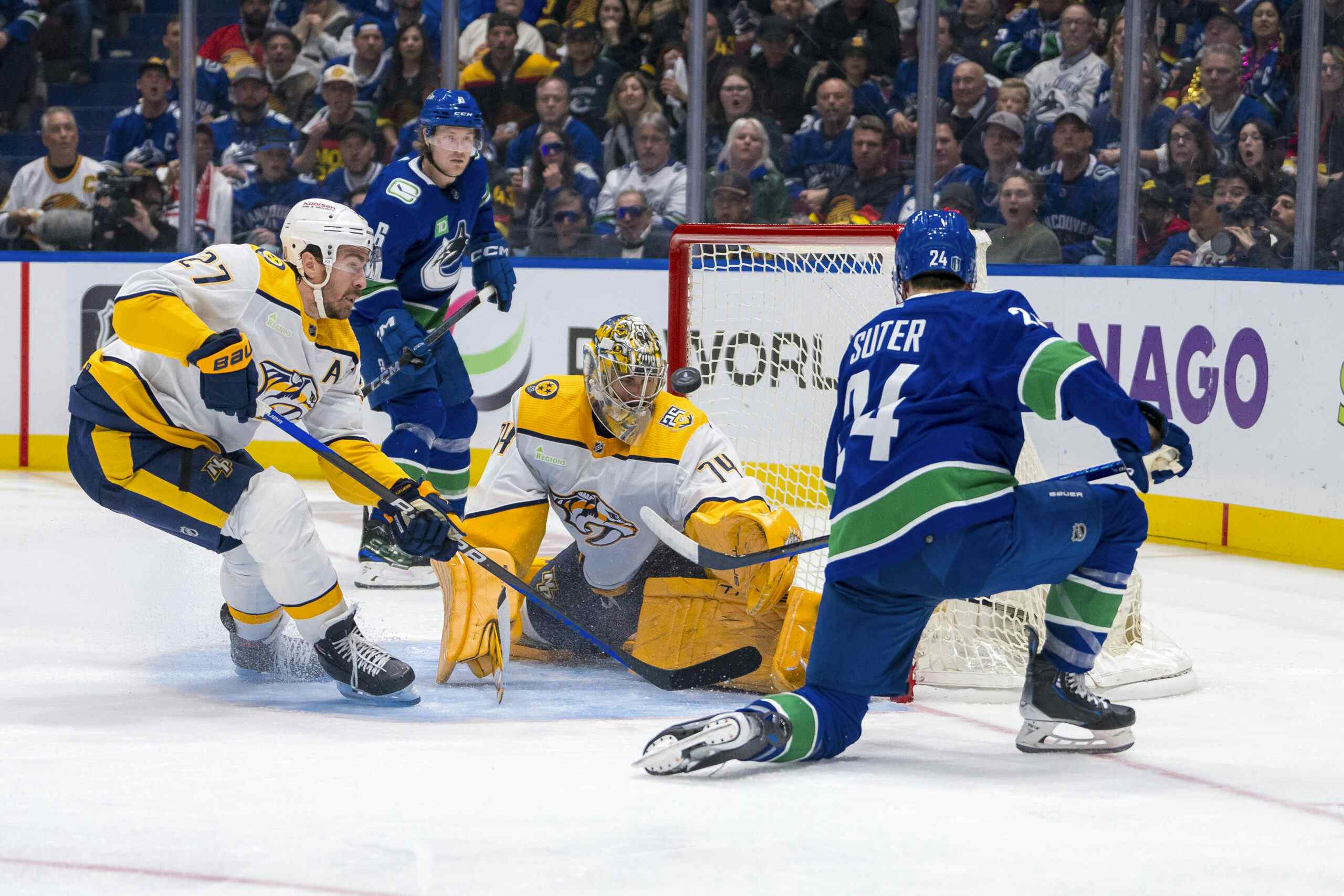CanucksArmy Year In Review: Brock Boeser
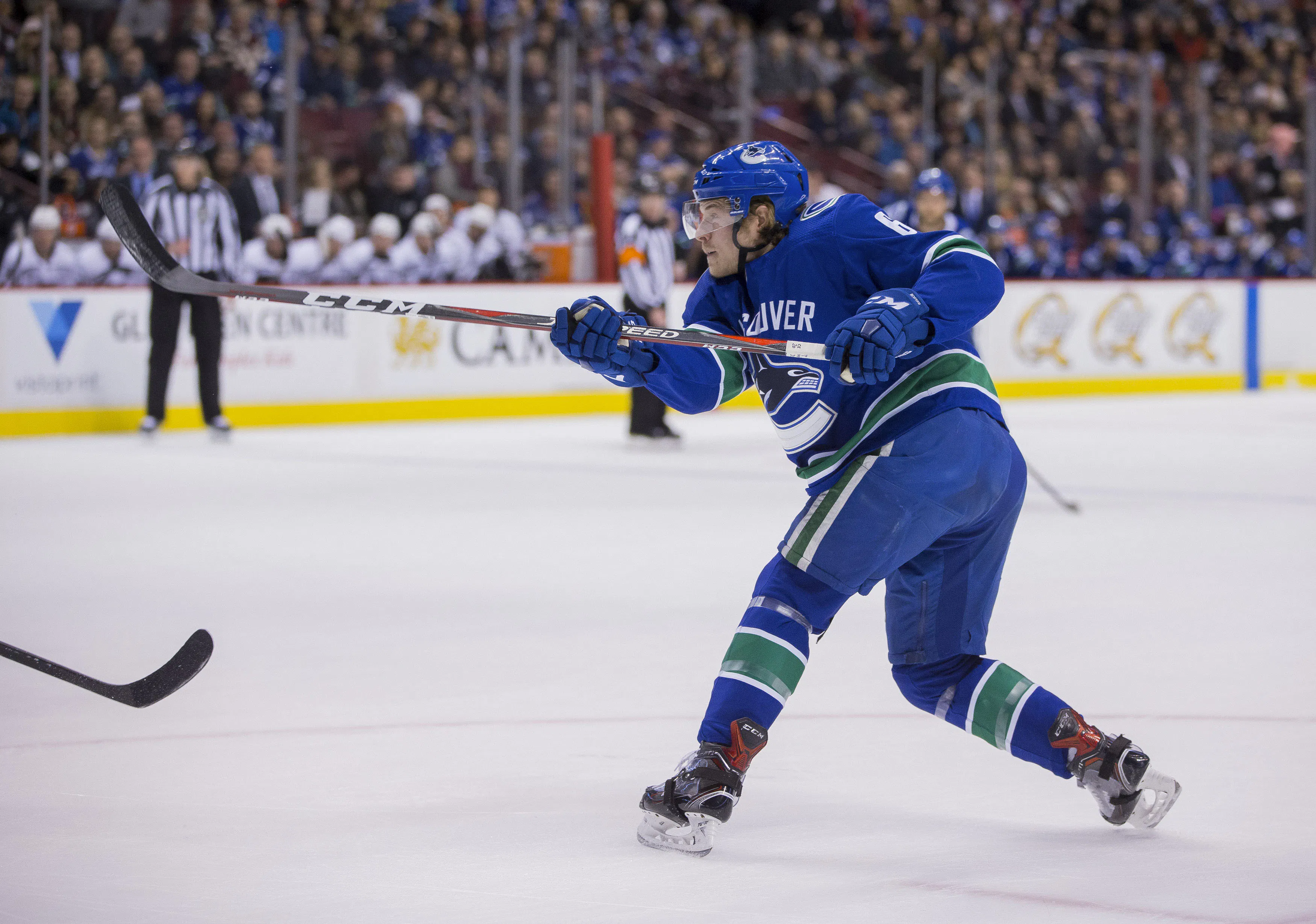
5 years ago
Despite finishing near the bottom of the standings for the third year in a row, the 2017-18 season was eminently more watchable than the prior two seasons. This was thanks in large part to the emergence of Brock Boeser, who stormed out of the gate en route to the best rookie season by a Canuck since Pavel Bure won the Calder Trophy in 1992.
Overview
Boeser was an offensive machine for the Canucks, finishing the season with a team-leading 29 goals and 55 points in just 62 games, including a mid-season stretch where he led the NHL in goals with 17. He finished second in voting for the Calder Trophy and were it not for suffering a season-ending injury in early March against the New York Islanders, could have mounted a serious challenge to eventual winner Mathew Barzal.
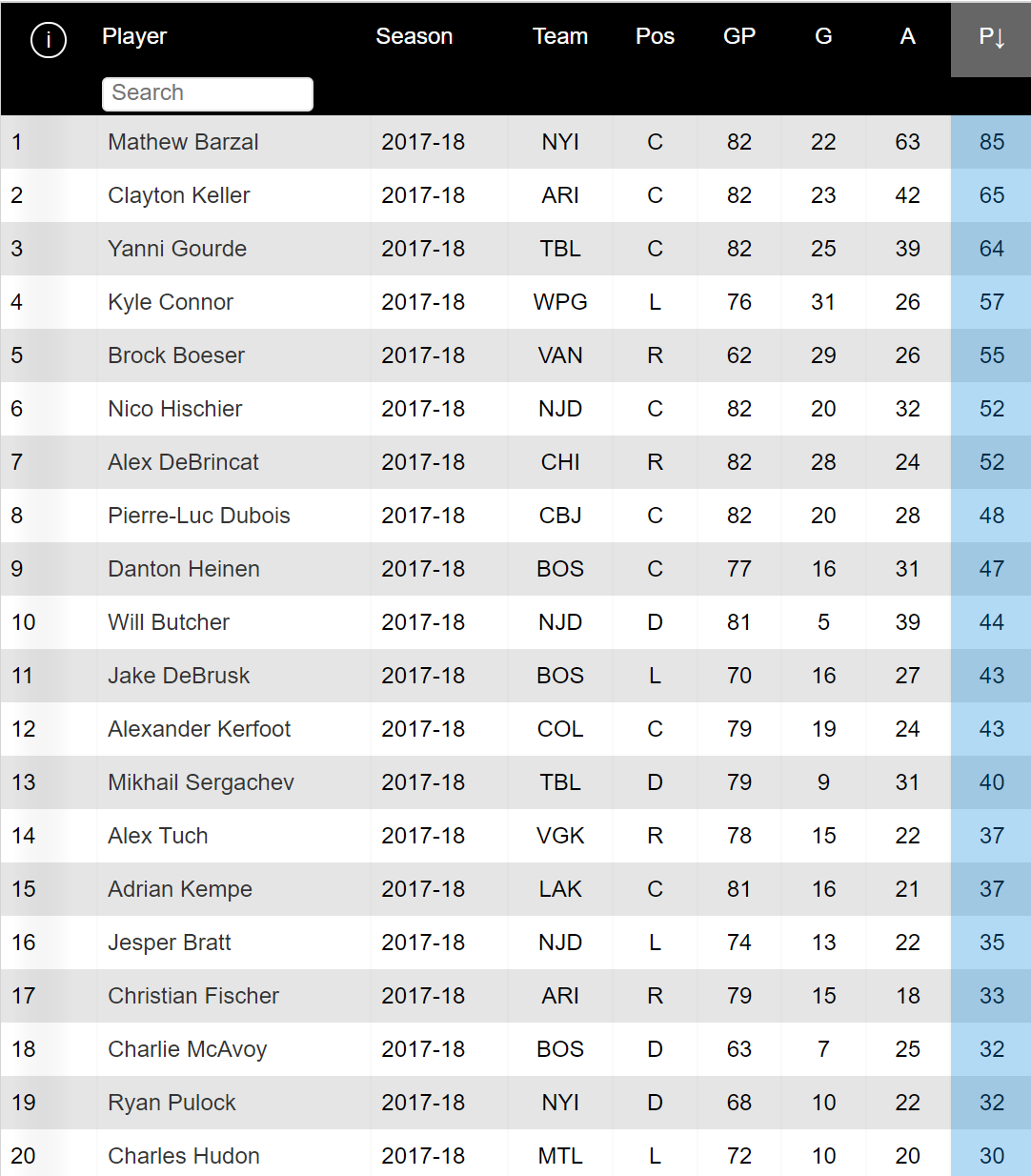
Defensively, there was a steeper learning curve for Boeser, who often found himself on the wrong side of the shot and scoring chance battle. He looks a little better when weighed against the rest of the Canucks, who were a below-average shot-suppression team last season, but the Canucks still allowed more high-danger shots with Boeser on the ice than without him. 

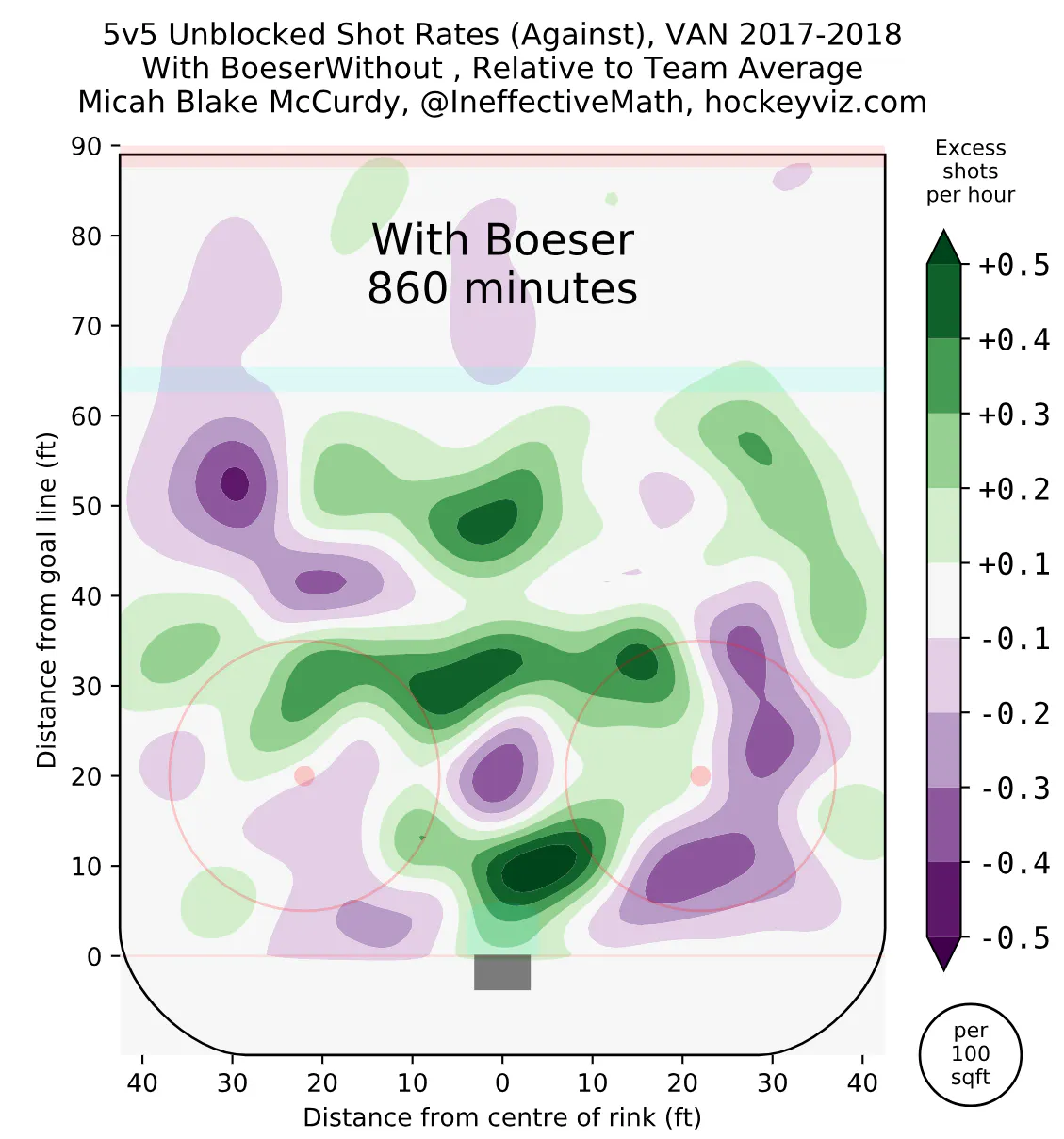
This is all to be expected, of course. Rookies tend to get caved in at even-strength, as defensive ability tends to lag behind offensive production for younger players. When viewed in totality, Boeser’s two-way profile is more than acceptable for a player in their 20-21-year-old season. He had a slightly above average share of shots at even-strength relative to the rest of the team, and wasn’t too much of a drag on any of his common linemates at even-strength.
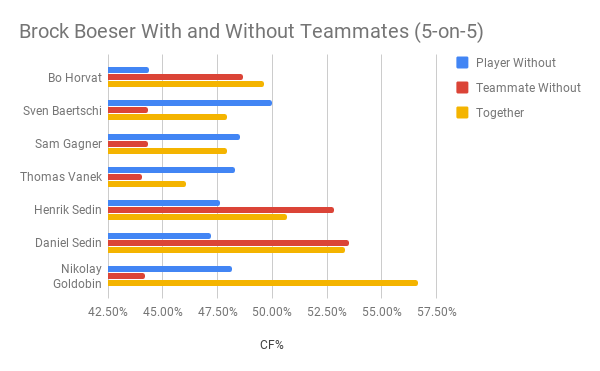
Where Boeser really showed his value was on the power play, where he had the most goals in a single season by a Canuck since Radim Vrbata in 2014-15. To the surprise of many, the Canucks were a top-10 team on the power play in their first season under Travis Green after finishing in the bottom four in the two prior seasons. This was thanks in large part to Boeser’s ten goals and 13 assists and the fact that Boeser gave the team a legitimate shooting threat again on the man advantage.
Moving Forward
Overall, Canucks fans should feel heartened by Boeser’s impressive rookie season. Its been three years since the Canucks had a player score as many goals as Boeser’s 29, and he gives the team the one-shot scoring talent they’ve been missing since Daniel Sedin’s lights-out 2010-2011 campaign.
When looking forward to next season, it would be easy to pencil in a 30+ goal performance from Boeser if he’s able to stay healthy, but fans who are ready to put him on the shortlist for the Rocket Richard trophy may want to pump the brakes. There are a couple of red flags that indicate he may have a tough time replicating the success he had last season.
The first is his shooting percentage. Boeser spent much of the season converting on nearly a quarter of the shots he took, and while it began to come back down to earth before his season-ending injury, he still finished the year at a sky-high 16.2%. The conventional wisdom dictates that it will eventually begin to regress towards the mean, although whether or not that regression begins next season remains to be seen. While Boeser gave us plenty of reason to believe he’ll be an above-average shooter, maintaining that high of a conversion rate for the foreseeable future would put him in an exclusive club. Since the lockout, the only players who have routinely kept their shooting percentage above 15% are Steven Stamkos and Brad Marchand.
I don’t like to use the term “lucky” when evaluating player performance because it implies that a player’s success is or was unearned. Looking back at the season Boeser had, it’s clear that he earned every one of the goals he scored. I think it would be more accurate to say that it’s unlikely that the circumstances that allowed Boeser to score so many goals this season repeat themselves. According to Emmanuel Perry’s expected goals model, no player on the Canucks had a greater disparity between their expected goal output and their actual goal output. While I don’t believe Manny’s model accurately accounts for shooting talent, it still paints a picture of a player who benefited from favourable circumstances.
Brock Boeser caught a lot of us off guard last season. Fans, media, but especially opponents took awhile to key in on him as the team’s most consistent offensive threat. The element of surprise is no longer on his side. After a stellar rookie campaign that saw him lead his team in points, be designated MVP of the all-star game, and get shortlisted for rookie of the year, he’s officially arrived. When opponents gear up to face the Canucks, you can bet targeting Boeser will be at the top of their game plan. I wouldn’t expect Boeser to get looks like this one again:
Failed to load video.
As is often the case when players benefit from high percentages, it’s entirely possible that Boeser improves in every facet of his game except actual boxcar totals. That’s not to say Boeser couldn’t go out and score 35-40 goals next season. He’s flashed enough talent that it wouldn’t surprise anyone. It’s just that fans shouldn’t be upset or take it as a poor sign for his development if he regresses a bit. Boeser has what it takes to be a consistent 30-goal scorer. It just may not happen right away.
That’s a big part of the reason why I’d caution against rushing to sign him. Players that consistently put up numbers like Boeser did in 2017-18 always cash in on both money and term. If he takes a step back, the Canucks can avoid overcommitting. If he does it again, then you’ll be happy to pay him what he’s worth.





